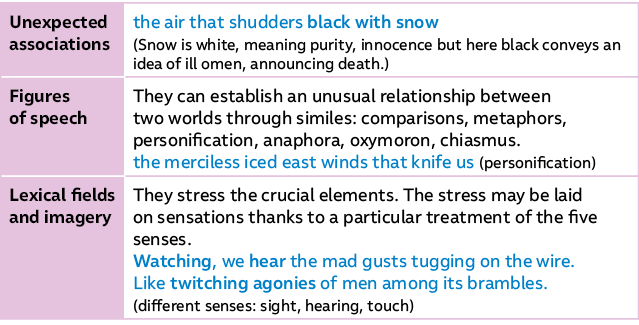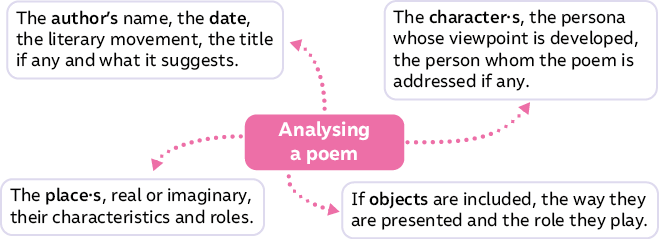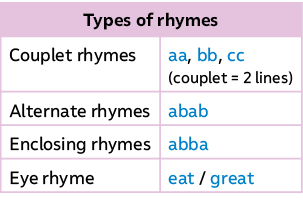Poetry may be quite baffling. It is based on a different use of language stressing both its beauty and musicality. In order to deal with a poem, it may prove useful to tackle the story it tells (even if it is not that obvious) and to analyse the various literary devices at stake so as to be able to grasp its meaning (especially when it is confusing).
I) Literal meaning
Poems may tell a story or focus on feelings or a particular object but can be confusing. The first step consists in identifying the subject and theme of the poem thanks to the following clues.
II) Poetic language
Poetry is based on a different use of words, based on their suggestive powers and musical patterns. Impressions, suggestions and connotations are at the core of it.
1) Playing with layout and structure
It is necessary to pay attention to the visual aspect of the poem, so as to determine its general structure: the number of stanzas, of lines, of dashes and gaps. It will help analyse the effect and meaning of the layout.
2) Playing with rhythm and sounds
One of the key features of English verse is rhythm. It is indeed based on metrical patterns which are defined by the arrangement of stresses and their frequency of repetition per line.
Poetry is organized by the division of each line into feet (= metric unit). Each foot is composed of two or three syllables with at least one stressed syllable. The most common metrical pattern is the iambic pentameter (iamb x 5).
Info
iamb: unstressed syllable + stressed one, da-DUM: beware
trochee: stressed syllable + unstressed one, DUM-da: garden
So fair – and foul – a day – I have – not seen. (Macbeth, Act 1, sc 3)
Rhythm is essential to creating the atmosphere of the poem. Any variation in the metrical pattern is significant. The musical effect of poetry also comes from other devices which enable to draw parallels or to contrast words: rhymes, alliterations, assonances, consonances, onomatopoeia…
Zoom
Playing with words
Poets tend to invent a new link between words, thus creating new meanings and showing the world from a new angle thanks to these elements. Analysing all those features of the poem enables to access its inner meaning.

All examples come from Exposure by Wilfried Owen.
➞ Read the full poem: bit.ly/PbacAngTle_WOwen



